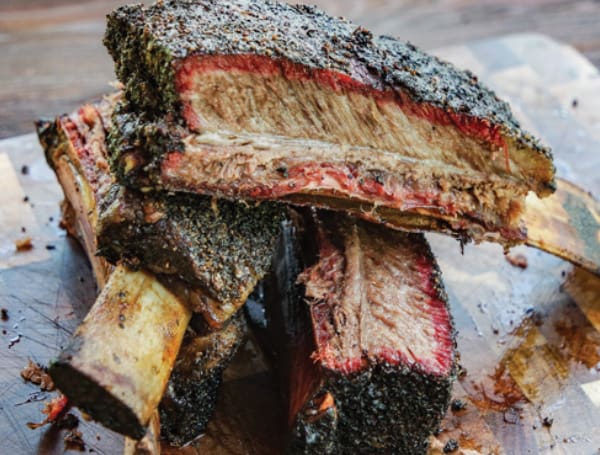Dry rubs are essential for turning simple cuts of meat into flavorful BBQ dishes. A balanced mix of spices and herbs enhances the meat’s natural taste while adding new layers of flavor. These rubs have a long history and now reflect a range of local and regional styles. Today, they continue to be loved for their ability to make BBQ more delicious.
While many know the basics of dry rubs, exploring more advanced techniques can revolutionize your grilling. A wide range of possibilities exists, from creating blends tailored to individual tastes to maximizing flavor absorption. Here we’ll cover how to pair rubs with various meats and offer tips for refining grilling skills.
The Basics of Dry Rubs
A dry rub typically consists of a mix of salt, sugar, herbs, and spices, each contributing to flavor and how it interacts with the meat. Salt helps retain moisture and enhance the meat’s natural taste, while sugar adds a subtle sweetness and helps with caramelization for a crisp texture. Spices like paprika and cumin add depth and warmth, while herbs like thyme and oregano provide freshness.
The main difference between dry rubs and wet rubs or marinades is their form and function. Dry rubs stick to the meat’s surface, creating a flavorful crust as it cooks. In contrast, wet rubs include moisture elements like oils or vinegar to add flavor, and marinades penetrate deeper to tenderize the meat with acidic components.
Creating Your Own Signature Dry Rub
Creating your own signature dry rub starts with choosing spices that you enjoy. Begin with essential ingredients like salt and sugar, which enhance flavor and help with caramelization. Then, experiment with spices such as paprika for smokiness, cumin for warmth, or chili powder for heat, blending them to match your taste preferences. Don’t hesitate to add herbs like rosemary for a fresh pine-like flavor or thyme for earthy notes.
As you mix these ingredients, aim for balance so that no single flavor overpowers the others. Adjust the quantities gradually until the flavors work well together. Consider adding unexpected elements like coffee grounds for subtle bitterness or citrus zest for a fresh kick.
Applying Dry Rubs: Techniques for Maximum Flavor
To master dry rubs, precision and patience are essential. Start by patting your meat dry to help the rub stick and form a nice crust. Use generous strokes to evenly distribute the rub, pressing gently to embed the spices. Timing matters; let the seasoned meat rest in the refrigerator, preferably overnight, so the flavors can penetrate and enhance taste and tenderness. If you’re short on time, aim for at least 30 minutes to allow the spices to work their magic.
Each type of meat may require slight adjustments, but the principle remains the same—patience rewards you with rich, layered flavors. Treat this technique like marinating, and you’ll achieve beautifully seasoned meat that bursts with aroma and taste when grilled.
Pairing Dry Rubs with Different Meats
When pairing dry rubs with different meats, the right seasoning can make an ordinary barbecue a culinary delight. For beef, use bold rubs with strong flavors like black pepper, garlic powder, and cayenne to complement its richness. Chicken works well with milder, fragrant blends; try mixing thyme, paprika, and lemon zest to enhance its flavor.
Pork benefits from a mix of sweet and spicy, such as brown sugar combined with chili powder and mustard powder to highlight its natural sweetness. Don’t forget about vegetables! A light dusting of cumin or smoked paprika can add great flavor to grilled veggies, making them a hit even among meat lovers.
Advanced Tips and Tricks for Expert Grilling
When it comes to advanced grilling, it’s not just about the heat—it’s how you use it. Mastering temperature control is essential; too hot can char your meat, while too low might prevent it from developing rich flavors. Aim for a precise heat that sears the rub into the meat, locking in juices and creating a delicious crust with complex spice layers.
Don’t be afraid to experiment with unconventional ingredients like cocoa powder for a hint of bitterness or cinnamon for a sweet-spice twist that complements smoky flavors. Understanding how these unique ingredients react to heat can lead to exciting new flavors in your dry rubs. Patience and timing are also important. Allow your meat to rest after cooking to let the flavors meld together.
The process of creating dry rubs transforms the barbecue experience, enhancing the natural flavors of meats and making each meal memorable. With a well-balanced mix of spices and herbs, grillers can customize their rubs to suit individual tastes and pair them perfectly with various proteins. Using proper resting time and temperature control further improve the final dish. By experimenting with unconventional ingredients and refining skills, anyone can turn ordinary barbecued meats into extraordinary culinary creations that delight the palate and celebrate the rich tradition of barbecue.
Please make a small donation to the Tampa Free Press to help sustain independent journalism. Your contribution enables us to continue delivering high-quality, local, and national news coverage.
Android Users: Download our free app to stay up-to-date on the latest news.
Connect with us: Follow the Tampa Free Press on Facebook and Twitter for breaking news and updates.
Sign up: Subscribe to our free newsletter for a curated selection of top stories delivered straight to your inbox.

